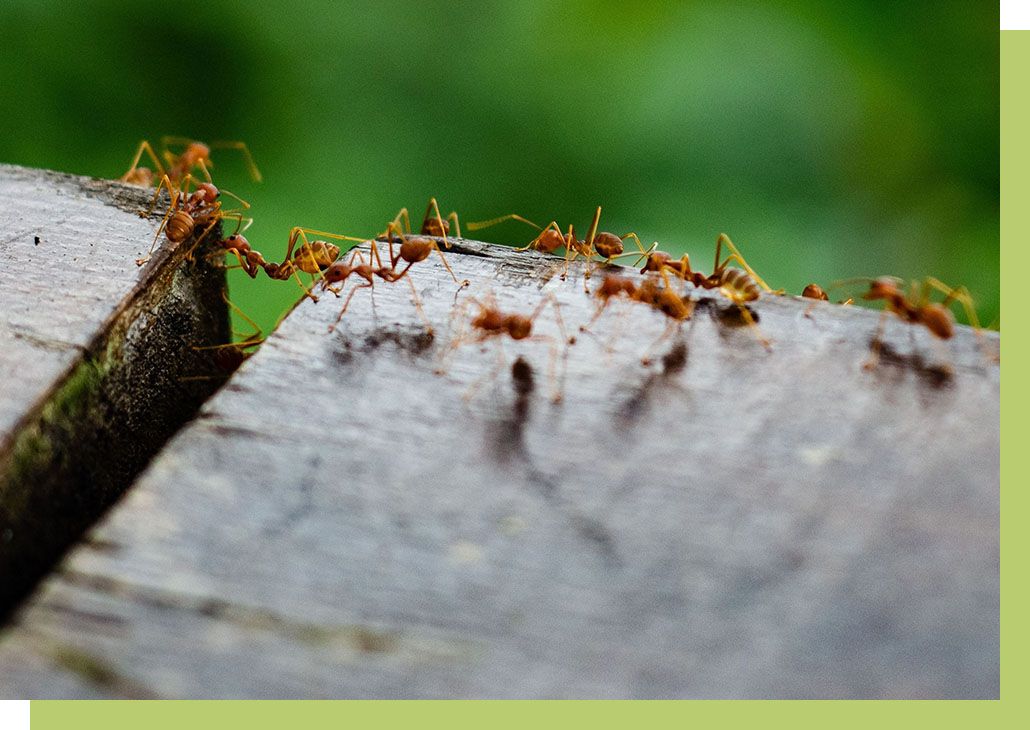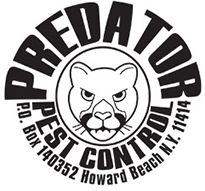Ants
Ants

There may be hundreds of queens in each Argentine ant colony and each queen lays hundreds of eggs which hatch in 30 days. After two months or so, adults emerge to renew the life cycle. New Argentine Ant colonies are formed in a process called budding. This is how an Argentine ant infestation can grow out of control in a short amount of time.
Argentine Ants
Argentine ants live underground, beneath boards, flowerpots, sidewalks, stones and houses. Argentine Ants have a “sweet tooth,” although they will prey on other insects in the garden as well as indoors, where they will dine on flea larvae as well as human and pet food. Argentine Ants do not sting and very seldom will bite. Argentine Ants become a problem when they get into pet & people foods, so uncovered food, both human and pet, attracts them as do un-rinsed food or soda containers left in garbage cans.

Preventing Ants
One of the best ways to prevent the Argentine ant from entering your house is caulking cracks and crevices around foundations that provide entry from outside using silicone. Predator Pest Control technicians are experienced in inspecting for access points and sealing them appropriately with the right material. Ants may be using wires and pipes to enter and travel to their destination. Our insect control technicians check utility service entrances for cracks and repair as needed. We can also eliminate indoor cracks and crevices in kitchens and other food preparation and storage areas were these ants may be gaining access. It is important that the homeowner follows all of the recommendations made by our technicians. Some of these recommendations may include: keeping lids on all garbage cans, storing dog food and other food products in Tupperware, rinsing out empty soft drink containers or removing them from the building, removing garbage from buildings daily and changing liners frequently.
Outdoor Argentine ant nests may be associated with ornamental trees and shrubs that support large populations of honeydew-producing insects such as aphids, soft scales, mealybugs or whiteflies. So, avoid planting such trees and shrubs next to buildings and keep plants, grass, and mulch several inches away from the foundation of buildings because ants will use these materials for nests.
If you think you may have an Argentine ant infestation please call our offices for a FREE INSPECTION & NO OBLIGATION ESTIMATE.
CARPENTER ANTS
Carpenter ants are called “Carpenter Ants” because they burrow out damaged wood and make a harborage out of the hollow cavity. Carpenter ants like to nest where they can find water and damp wood. Their first targeted area is outside wood such as dead tree stumps, firewood or the plants around your house. If the outside wood is not enough to sustain their colony, carpenter ants start to build nests inside the home, usually entering through wet, damaged wood. Because there is plenty of damp wood in Long Island, carpenter ants thrive in this environment.
During summer months, carpenter ants are focused on finding water, food and expanding their colony. When they find the perfect conditions, they will settle anywhere in the building. Carpenter ants usually build their nests on the ledge of a window sill that has been water damaged, near sinks, dishwashers, roofs, attics, chimneys, electrical outlet boxes, hollow doors, or leaky vent pipes. Literally overnight, several hundred to a thousand ants can set up a satellite colony within a house. Carpenter ants are most active in the early morning hours, late in the day or before and after a rainfall.
How can you determine if you have a carpenter ant problem or just a few ants foraging around for food near your house? Look for existing signs of a carpenter ant invasion. If you notice small, chewed up piles of wood shavings or sawdust, that could be a sign of carpenter ants. If you notice five to 10 ants per day in your house, chances are they have an indoor nest. If you see swarms of winged ants buzzing around your gutters and siding, it is a sure bet that your house or office has been invaded.
Trying to exterminate carpenter ants by yourself may be tough because there are nine types of carpenter ants in the U.S., and store-bought ant pesticides may not work against a colony of hundreds or maybe thousands. The only way to eliminate an interior carpenter ant nest is to hire a professional to locate the nest. Hiring professional exterminators like Predator Pest Control for carpenter ant inspection of your Long Island property is the best way to stop the carpenter ant onslaught. Predator Pest Control’s licensed and experienced technicians know exactly where to uncover the interior nest and eliminate the carpenter ants from your property. Although Carpenter ants don’t eat wood for nourishment, they can cause a considerable amount of damage. Early detection and elimination are the best ways to stay proactive in the fight against these invasive ants of destruction.
ODOROUS HOUSE ANTS
Odorous House Ants, are sometimes called “sugar ants.” They get that name because they readily feed on sugar, pop, syrup, and other sweets. Odorous House ants don’t eat wood or damage structures. In nature, they make their nests under rocks in the ground and in stumps and fallen logs. They are adept at living and foraging below ground level. This can make it hard to know you have them – and hard to control them.
They were originally called Odorous House Ants because when you step on them, they smell bad, like urine or rotting coconut. Some people even refer to them as ‘piss ants.’ In nature, the odorous house ant eat other insects and insect secretions. Aphids make a sticky ‘sap’ when they eat the leaves of bushes and trees. This ‘sap,’ almost pure sugar, is an insect superfood, highly valued by ants and wasps alike. Odorous house ants can have huge colonies. These colonies are known as super colonies. Each individual nest can have many queens but these super colonies can cover entire neighborhoods.
Because the colonies are so big and these ants prefer to live underground, it can be very difficult for a homeowner to ever get control of an odorous house ant infestation using over the counter pesticides. Predator Pest Controls technicians are well experienced dealing with the Odorous house ant infestations. Our technicians know exactly where to look when inspecting for these invasive ants.
Predator Pest Control technicians will be able to prescribe a treatment that will meet each individuals customers’ needs. We can provide an alternative to pesticides to eliminate the problem without the unpleasant smells and toxic residue usually associated with using typical pesticides. Feel free to call the offices of Predator Pest Control to have a FREE, NO OBLIGATION inspection and estimate today. Be sure to mention that you saw this on our website.
PAVEMENT ANTS
The pavement ant is dark brown to blackish, and 2.5–4 mm long. Like other ants, there are the workers, alates, and a queen. Alates, or new queen ants and drones, have wings and are twice as large as the workers.
The drone’s only job is to mate with the queen, and reproduction is at its highest in spring and summer. Tetramorium, like many other ants, have nuptial flights where drones fly high up in the air and mate with new queens. The queen finds a suitable nesting location and digs a founding chamber. As the eggs hatch and the ants develop, they will spend that time, about two to three months, tending to the queen of their colony. They will continue helping in the colony until they are a month old.
Our services extend to a wide variety of facilities:
- Hospitals
- Health care facilities
- Nursing homes
- Day care facilities
- Schools
- Office Buildings
- Hair salons, Barber shops & Nail salons
- Supermarkets, Restaurants & Bars
- Industrial properties, Food processing plants, Warehouses & Storage facilities
- All commercial properties
Ready to Get Started?
Call or email us today and let our services speak for themselves.
